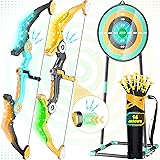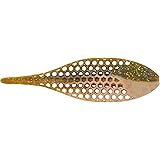In any challenging wilderness scenario, preparedness is paramount for survival. Experts often emphasize that having the right tools significantly increases the chances of navigating unforeseen dangers. The video above highlights three formidable options: the Spetsnaz shovel, the tactical tomahawk, and the spear, prompting a crucial question about which to select for a critical survival situation.
Selecting effective survival weapons or tools demands careful consideration of versatility, durability, and practical application. Each item possesses unique advantages and disadvantages, making the ideal choice dependent on the specific challenges anticipated in a survival context. Understanding the multi-faceted capabilities of these implements is essential for anyone serious about preparedness.
The Spetsnaz Shovel: A Multi-Functional Survival Tool
The Spetsnaz shovel, an iconic piece of military equipment, transcends its primary function as an entrenching tool. This robust implement is renowned for its surprising versatility in various survival scenarios. Its sturdy construction and sharpened edges transform it into far more than just a digging instrument.
Historically, this military shovel has been used by various forces, not just for digging, but for close-quarters combat and basic fieldcraft. Consequently, its design makes it an excellent choice for a wide array of bushcraft tasks. Imagine using a Spetsnaz shovel to quickly excavate a fire pit, clear a campsite of undergrowth, or even fashion primitive shelter components by chopping small branches.
Beyond Digging: Practical Applications of the Spetsnaz Shovel
The applications for the Spetsnaz shovel extend well beyond simple earth-moving. It serves effectively as a chopping tool for processing firewood or clearing paths, owing to its hardened steel edge. Furthermore, its flat surface can be heated to act as a rudimentary cooking pan in an emergency.
For self-defense, a well-placed strike from a Spetsnaz shovel can be devastating. While not a primary throwing weapon, its aerodynamic properties allow for short-range throws with practice. Therefore, it becomes a valuable, understated addition to any survivalist’s arsenal, offering both utility and a layer of personal protection.
The Tactical Tomahawk: A Versatile Chopping and Defense Weapon
The tactical tomahawk represents a modern evolution of an ancient tool, combining historical effectiveness with contemporary materials. This specialized axe is designed for breaching, chopping, and, crucially, as a potent self-defense instrument. Its balanced design often makes it an intuitive choice for those seeking a dedicated chopping and defensive tool.
Modern tactical tomahawks are typically constructed from durable carbon steel, featuring a sharp edge, a piercing spike or hammer poll, and often a comfortable, non-slip handle. These features make it highly effective for processing wood for fire or shelter. Consider a scenario where rapid construction of a lean-to is paramount; a tactical tomahawk could swiftly fell saplings and process logs with precision.
Advantages and Considerations for Tomahawk Use
The tactical tomahawk excels in tasks requiring focused impact and cutting power. It can be utilized for splitting wood, breaking through obstacles, or even prying open containers. Moreover, its ergonomic design often facilitates agile use in self-defense, offering both reach and formidable striking capability.
While some tomahawks are designed for throwing, mastering this skill requires considerable practice and a deep understanding of the tool’s balance. Consequently, it is primarily valued for its direct utility and defensive capabilities in hand-to-hand engagements. Selecting a quality tactical tomahawk ensures reliability when it is most needed as a survival throwing weapon or close-quarters tool.
The Spear: Humanity’s Oldest Survival Weapon
The spear stands as arguably one of humanity’s most ancient and universally effective hunting and defensive weapons. Its fundamental design provides a crucial advantage: reach. In a survival scenario, this extended reach can be the difference between securing food and going hungry, or deterring a threat and facing direct confrontation.
A spear can be improvised in the wilderness using a sturdy branch and a sharpened tip, or a knife lashed to a pole. This adaptability makes it an incredibly valuable tool, even for those without specialized gear. Picture yourself needing to secure food in a wilderness setting; a well-crafted spear provides a safe distance for hunting fish or small game, minimizing risk.
Improvising and Utilizing a Spear for Wilderness Survival
The creation of an effective spear requires some basic bushcraft knowledge. Selecting the right type of wood, fire-hardening the tip, or securely attaching a stone or metal blade are all critical steps. Furthermore, the spear’s length allows for probing unknown terrain, testing ice thickness, or serving as a walking stick for difficult traverses.
From a defensive standpoint, the spear’s ability to maintain distance from a potential threat, whether animal or human, is invaluable. Its psychological impact alone can be significant. Therefore, understanding how to craft and effectively use this fundamental tool is a core skill for any serious survivalist considering survival throwing weapons or versatile defense options.
Choosing Your Survival Tools: Key Considerations
When selecting between these formidable survival tools, several factors warrant careful consideration. The weight and bulk of each item significantly impact portability, especially during long treks through challenging terrain. A lighter, more compact tool may be preferable for fast-moving scenarios, while a heavier, more durable option might suit a base camp setting.
Furthermore, the specific environment and anticipated challenges play a crucial role. For instance, in dense forests, a chopping tool like a tomahawk might be prioritized for clearing paths and processing wood. In contrast, open plains might favor the reach of a spear for hunting or defense. Consequently, a comprehensive assessment of your potential survival environment is essential.
Training, Maintenance, and Mindset for Effective Survival Weapons Use
Possessing a tool is only half the equation; proficiency in its use is equally vital for survival. Regular training with any chosen survival weapon is indispensable, encompassing both its primary function and its potential secondary uses. For example, practicing throwing techniques for a tomahawk or shovel, or refining spear-making skills, builds essential muscle memory and confidence.
Moreover, proper maintenance ensures the longevity and reliability of your gear. Sharpening edges, treating handles, and protecting metal components from corrosion are crucial tasks. Therefore, a proactive approach to tool care is paramount for ensuring they perform optimally when faced with critical survival demands. Ultimately, the best survival throwing weapons are those you know how to use and maintain effectively.











